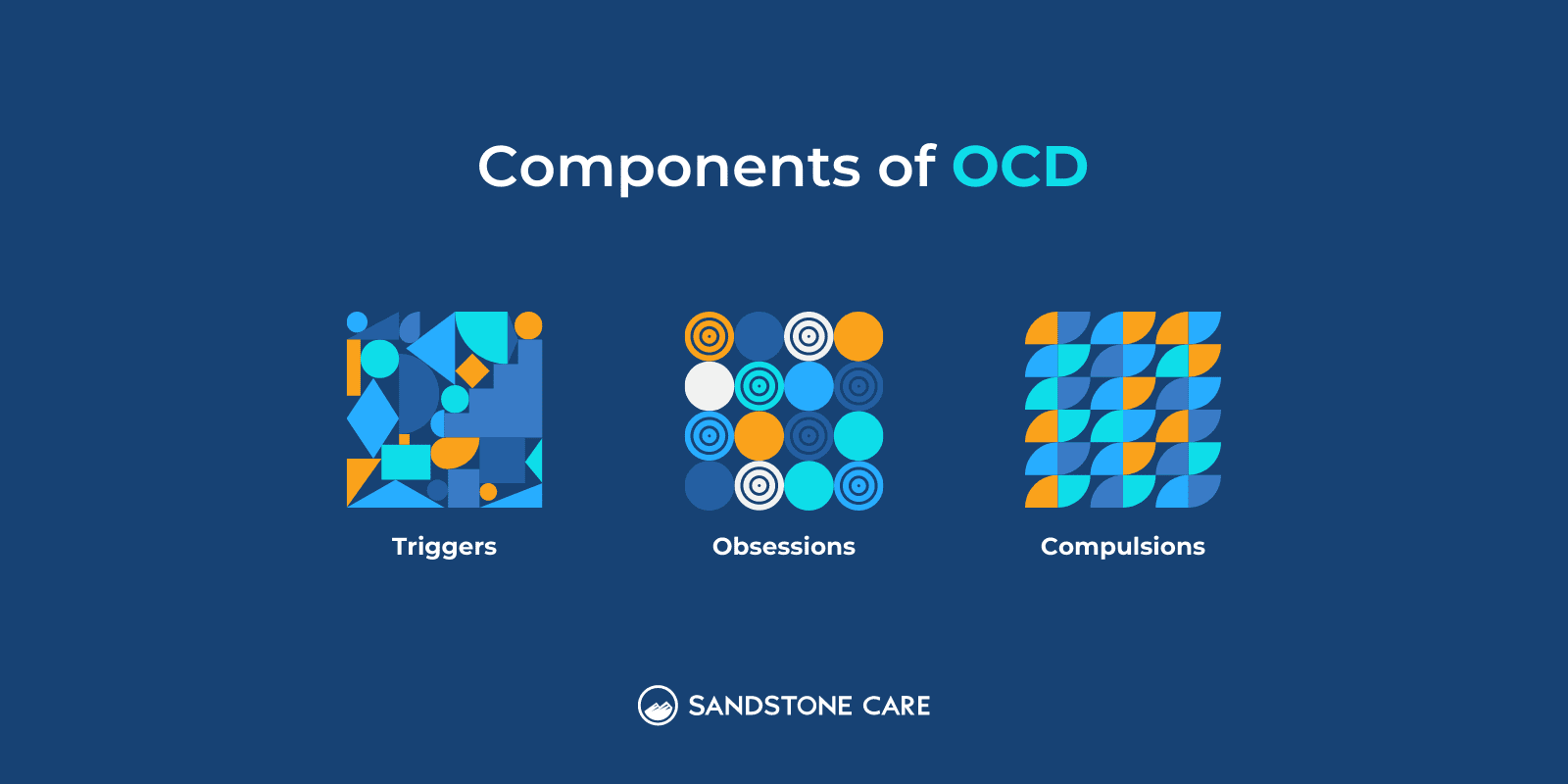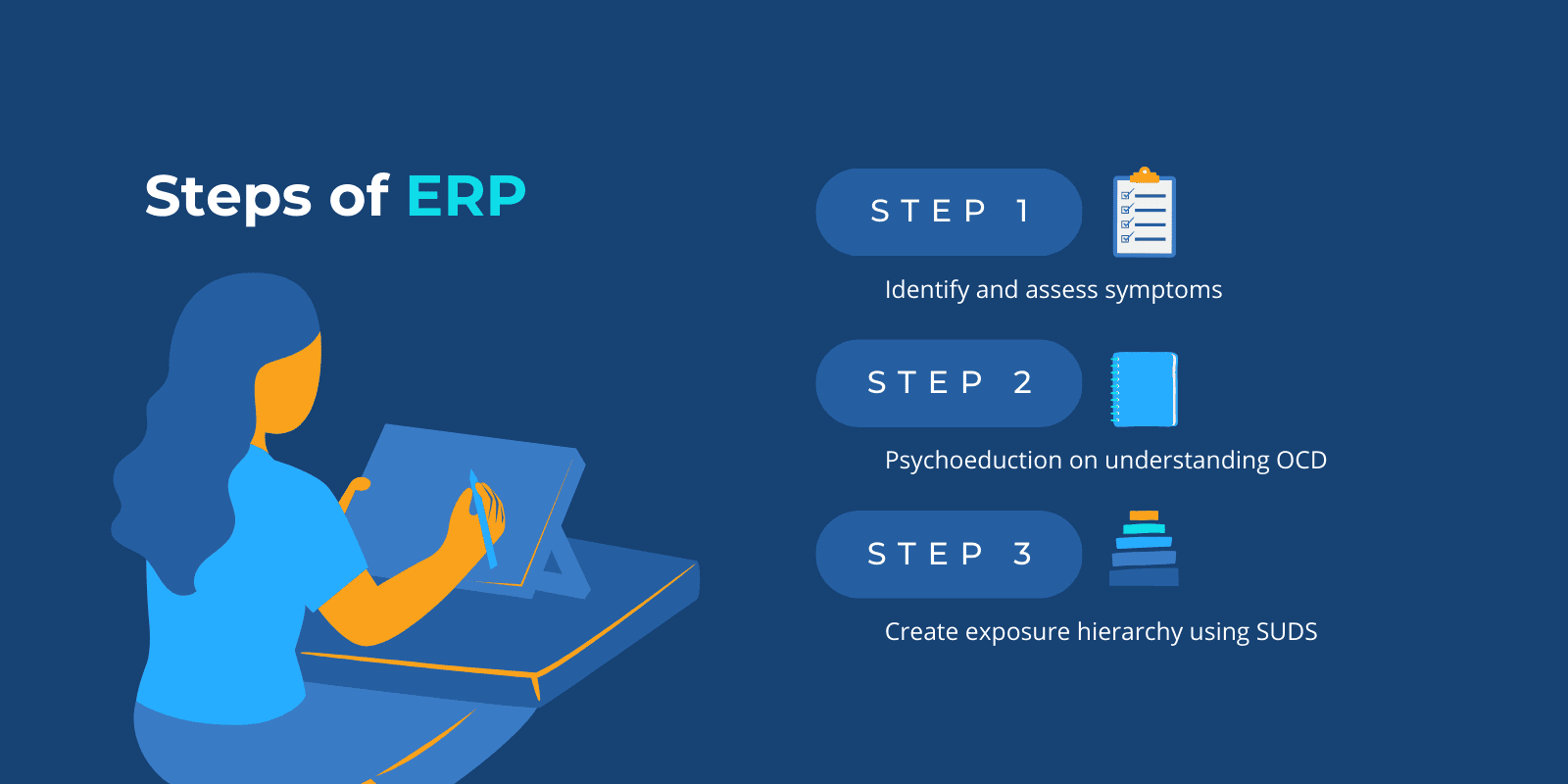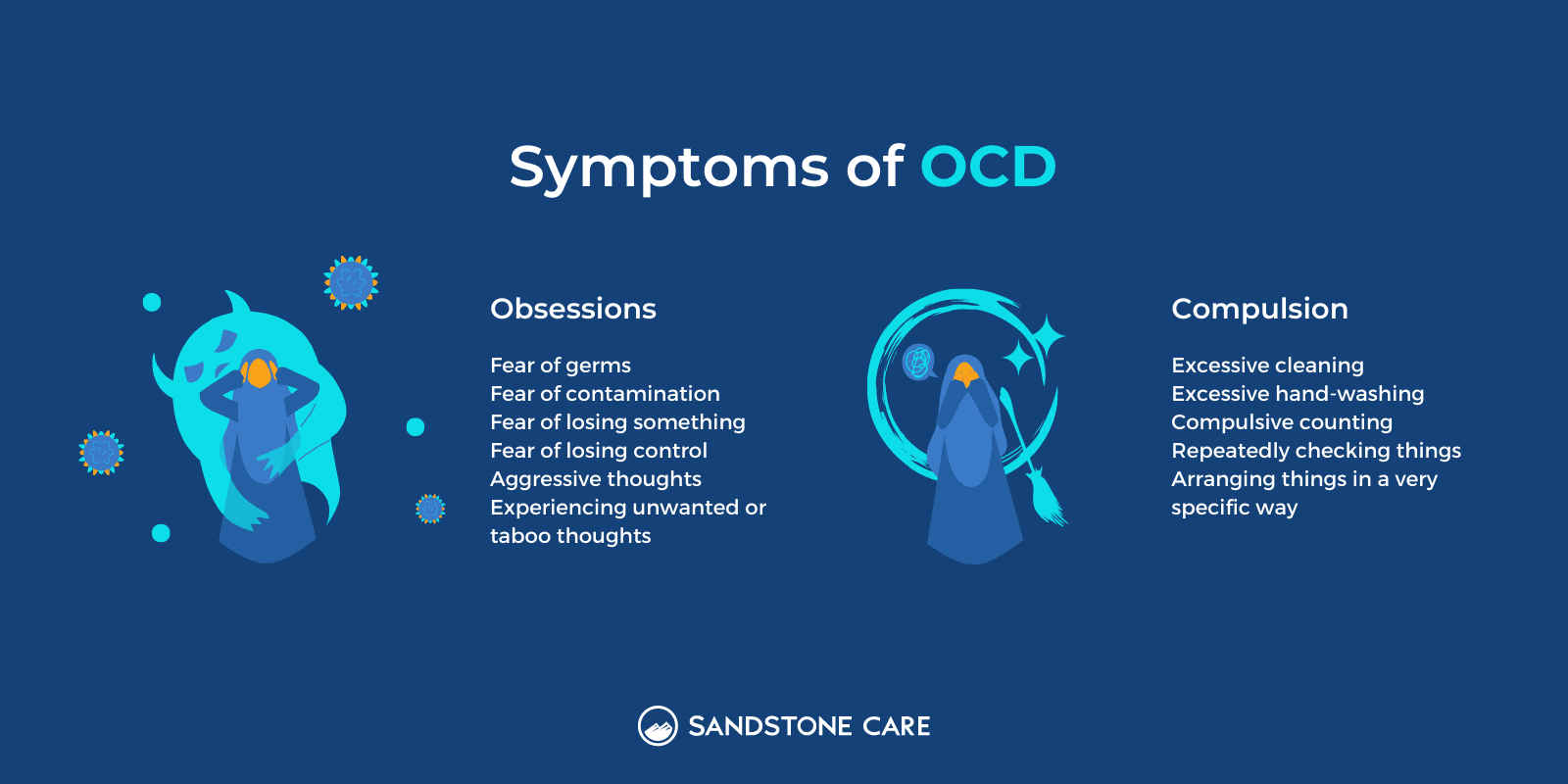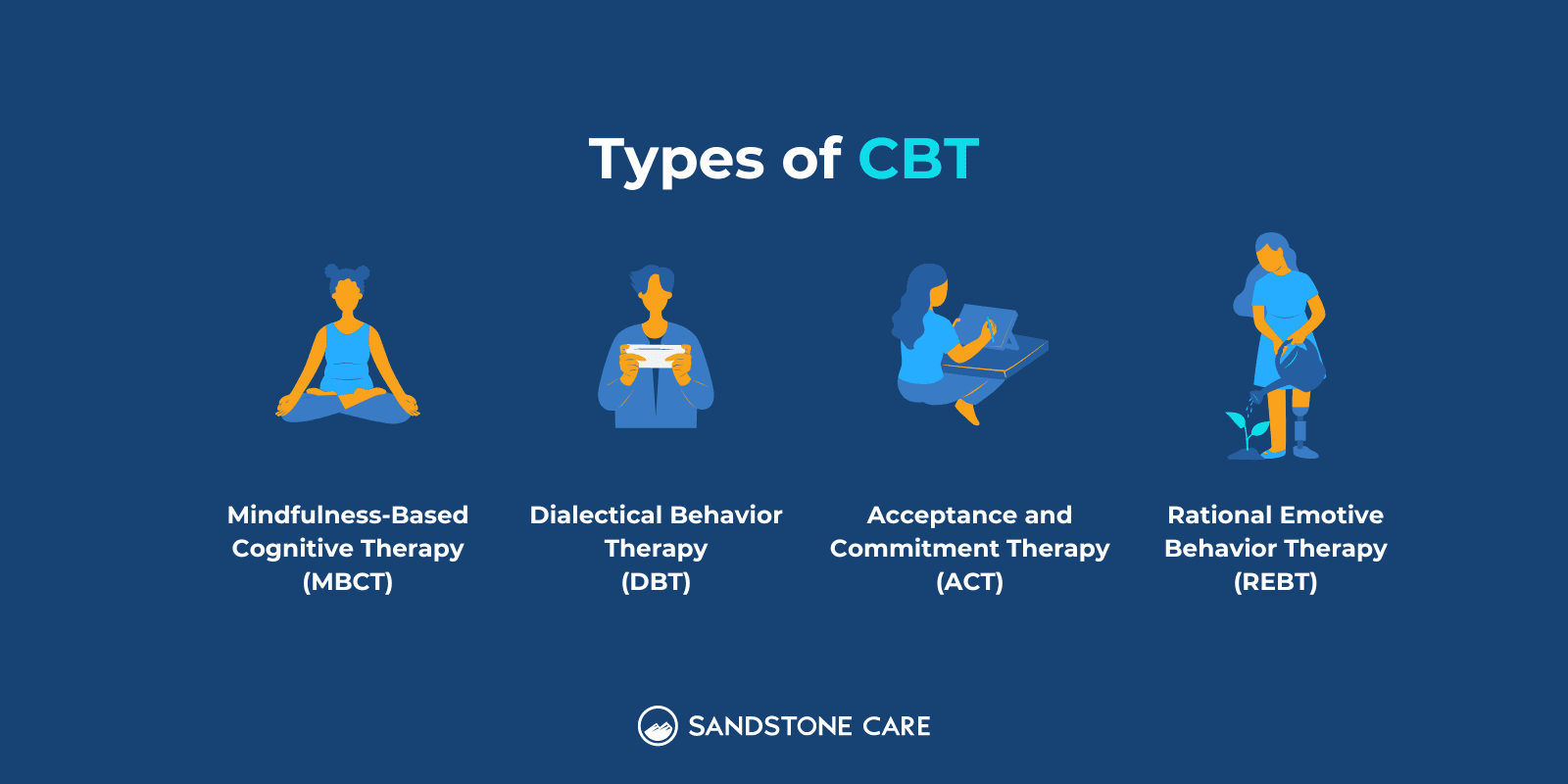Exposure & Response Prevention (ERP)
What Is ERP?
Exposure and Response Prevention (ERP) is a form of cognitive-behavioral therapy (CBT) designed to treat individuals diagnosed with obsessive-compulsive disorder (OCD).
ERP involves helping a person confront fears or discomfort and having a person resist compulsions.
Obsessive-Compulsive Disorder (OCD) is a common and chronic disorder that is characterized by uncontrollable and reoccurring thoughts (obsessions) and behaviors (compulsions) that a person feels the need to repeat again and again.
The symptoms of OCD can impact all aspects of a person’s life, including work, school, and relationships.
Exposure and Response Prevention for obsessive-compulsive disorders can teach an individual how to manage the uncertainty and distress that obsessions cause and how to change compulsive behaviors.
What Are Exposure And Response Prevention Techniques?
A therapist typically starts by helping the individual identify their triggers, obsessions, and compulsions. With this, the clinician will guide the individual with various ERP techniques.

Important ERP techniques involve:
- Psychoeducation
- Exposure
- Exposure scripts
- Tolerating uncertainty
- Response prevention
- Delaying rituals
- Modifying rituals
What Is The History Of Exposure And Response Prevention Techniques?
According to Psychology Research and Behavioral Management, the development of ERP was based on behavioral theories.
These theories form the connection between obsessions and classical conditioning, along with the maintenance of compulsions through operant conditioning.
Classical conditioning can describe how thoughts can spark fear when associated with distressing events.
Mowrer’s two-factor theory discusses how operant conditioning can explain how avoidance and escape behaviors are maintained because they temporarily help with distress.
The relief from compulsions feels like a reward and reinforces the same behavior repeatedly.

Given this idea, Exposure and Response Prevention therapy works by weakening the conditioned response so that obsessions and compulsions become more manageable.
Habituation is a natural decrease in fear that comes about by a stimulus with repeated exposure. In a habituation model, the goal of exposure is to reduce anxiety.
Another idea is the inhibitory learning model, which describes how individuals can learn to block out their obsessive thoughts or urges with new information.
This model supports the idea that the conditioned memory is not erased; rather, a new non-threatening association can override the conditioned association.
With an inhibitory learning model, the goal of ERP is to teach that the distress triggered by OCD obsessions and compulsions can be bearable instead of trying to aim for an overall decline in anxiety.
What Is Exposure And Response Prevention Training?
Exposure and Response Prevention training teaches people how to confront their fears and resist compulsions.
Through ERP training, a person can learn how to manage the symptoms of OCD with the guidance of an experienced therapist.
ERP training can help individuals by gradually exposing them to their triggers and obsessions and teaching them how to tolerate distress.

What Is An Example Of ERP Therapy?
ERP is not a one-size-fits-all approach because OCD can manifest itself differently across an individual’s obsessions and compulsions.
However, an example of ERP therapy can be with a person with OCD who may have a germ contamination phobia.
If the person was going through ERP therapy, possibly one of the things they would have to do is touch a doorknob, experience the fear, and actively not engage in their compulsion.
Over time, the situations would increase in intensity. The therapist may take them to a store or a more public place as they progress, slowly facing their bigger fears.
Not all ERP approaches involve stopping a physical action.
Sometimes, people may have words or prayers in their minds or numbers they count to. In this case, the therapist may have them expose themselves to the distressing thought and resist praying or counting.
What Is The Goal Of ERP?
The main goal of ERP is to navigate how a person responds to distress and teach them how to manage their feared stimuli and their responses.
Through ERP, a person can learn that they don’t need to engage in rituals to manage anxiety.

The specific goals of ERP can be different for each individual, as each person in treatment has unique circumstances and needs.
Another big goal of ERP is to help individuals better manage the symptoms of OCD so that they can live the lives they want.
OCD can affect many aspects of a person’s life, and managing the symptoms through ERP can help improve a person’s overall health and well-being.
How Is ERP Different From Traditional Talk Therapy (Psychotherapy)?
ERP differs from traditional psychotherapy because it is specifically designed to treat OCD.
Psychotherapy is a term that refers to a variety of different treatments that helps a person identify and change unhealthy and difficult feelings and behaviors.
Although ERP is a form of psychotherapy, psychotherapy focuses more on identifying and understanding feelings, whereas ERP focuses on actions and “doing.”
However, ERP and traditional talk therapies can be used to treat OCD.

How ERP Works
How Is ERP Done?
At the beginning of a session of ERP, the individual and their therapist typically discuss triggers and make a list from least distressing to highest.
Then, the individual and the therapist will work together by slowly facing their fears and learning how to resist the urge to engage in compulsions.
A typical ERP session may involve:
- Discussing progress since the last session
- Talking about any new triggers
- Problem-solving any challenges
- Practicing exposures
- Reflecting on what was learned through exposures

What Are The Different Types Of Exposure And Response Prevention Techniques?
Important ERP techniques involve:
- Psychoeducation
Psychoeducation involves learning about OCD, the symptoms, treatments, and other information to help better understand what can help. - Exposure
This part of ERP involves being exposed to triggers gradually. - Tolerating uncertainty
When a person with OCD has a distressing thought, they engage in compulsion as a response.
With ERP, a person faces these distressing thoughts and the uncertainty that comes along with them and learns how to tolerate the uncertainty. - Response prevention
Response prevention is one of the main components of ERP. This involves the intentional action of resisting engaging in compulsions or avoidance behaviors. - Delaying rituals
While gradually being exposed to triggers, it can be helpful to delay rituals.
A therapist may ask a person to increase the time between their obsession and compulsion to help make progress towards resisting the compulsion altogether. - Modifying rituals
A therapist may also ask a person to do their ritual differently.
This act can help a person realize that their obsessions do not become real when they don’t perform their usual ritual.
What Are The Steps For Exposure And Response Prevention?

The first step of Exposure and Response Prevention would be working with the therapist to identify and assess the individual’s symptoms.
The therapist will help a person identify their obsessions, intrusive thoughts, images, and urges. They will also help to identify their compulsive rituals and how they decrease their anxiety.
Additionally, they will discuss the person’s feared outcomes, which is basically “if you had thought X and couldn’t perform your ritual, what would happen”?
They would also help identify what situations the person avoids so that they don’t feel anxious or have intrusive thoughts.
The second step would be psychoeducation, where a person learns and understands accurate information about OCD, which can include symptoms, treatments, and treatment effectiveness. In this step, the therapist will likely discuss the treatment goals and components of the process.
Next, the individual and their therapist will create an exposure hierarchy to help gauge the individual’s distress with a Subjective Units of Distress Scale (SUDS).
Once that hierarchy is developed, they will work gradually up each level of distress.
ERP may be conducted in the therapy room, in real-life situations (in vivo) with the therapist, or by using the person’s imagination to picture an exposure situation.

How Long Does ERP Therapy Take?
The length of ERP therapy differs from person to person, as each of their needs is unique and should be treated accordingly.
Some people may see improvements in weeks; for others, it can be months.
How Many Sessions Are In Exposure And Response Prevention?
ERP can last a dozen sessions or even longer, depending on the individual.
How Long Should An ERP Session Last?
ERP sessions usually begin at around 60 to 90 minutes and can become shorter throughout therapy.
How Often Should ERP Be Done?
ERP usually starts twice a week for at least the first three weeks and then is adjusted according to the individual’s needs.
There is no one-size-fits-all for how often ERP should be done, as each individual’s needs are unique and may require more or less session time.
Using ERP To Treat OCD, Anxiety, & Other Illnesses

Why Is ERP Important For Treating OCD?
ERP is important in treating obsessive-compulsive disorder because it helps a person face their fears so that they can better manage their OCD symptoms and live the lives they want.
If gone untreated, a person’s condition can become worse and can have a significant impact on their life and well-being.
OCD can be a debilitating condition that brings causes a lot of distress to the individual.
A person with OCD needs to know that they are not alone and there is help there for them.
Is ERP The Only Way To Treat OCD?
ERP is not the only type of therapy available to treat OCD.
Other psychotherapies and medications like serotonin reuptake inhibitors are available for treating OCD.
However, ERP is one of the most effective and evidence-based treatments for OCD.
Also, in 2018, the FDA approved Transcranial Magnetic Stimulation (TMS) as another form of treatment for OCD.
ERP can be effective when combined with other therapies as well.
ERP is considered the first-line treatment for OCD, but it is important to find what treatment works best for you and your needs.

Is ERP Or CBT Better For OCD?
ERP is one of the most effective treatments for OCD.
ERP is a form of CBT but can be more effective than traditional approaches because it is designed specifically for OCD, whereas CBT is an umbrella term that refers to a number of therapies used to treat a variety of disorders.
Does ERP Work For Anxiety?
ERP works to manage the anxiety that comes from obsessions and compulsions.
At first, ERP may cause feelings of anxiety because the situations they are put in can be uncomfortable or daunting.
Exposure therapy is a form of therapy that is used to treat a variety of anxiety disorders. However, exposure and response prevention therapy are specifically designed to treat OCD.
In some cases, ERP may be used for eating disorders, phobias, panic disorder, and post-traumatic stress disorder.
Does ERP Work For Social Anxiety?
The National Institute of Mental Health mentions cognitive-behavioral therapy (CBT), exposure therapy, and acceptance and commitment therapy (ACT) as the most common treatments for social anxiety, along with medication.
Exposure therapy differs from ERP in the way that ERP is a more specific form of exposure therapy. However, exposure therapy is the same in that it focuses on confronting your fears to help engage in situations and activities you have been avoiding.
Who Will Find Exposure And Response Prevention Therapy Most Helpful?
Many people with OCD who receive ERP will see improvement. However, it is unclear which individuals with OCD would benefit the most from this treatment.
According to the Journal of Clinical Psychiatry, Exposure and Response Prevention can be helpful for adults with OCD who do not respond to SRIs.
If you or a loved one is struggling with OCD, reach out to your healthcare provider or a mental health professional that can help you determine if ERP can benefit you.
FAQ
You have questions. We have answers.
Our goal is to provide the most helpful information. Please reach out to us if you have any additional questions. We are here to help in any way we can.
A common misconception about ERP therapy is that the goal is to completely get rid of unwanted thoughts or to “cure” OCD.
In reality, the goal of ERP therapy is to challenge a person’s obsessions and compulsions so they can overcome their fears and better manage the symptoms of OCD. ERP is not a cure for OCD but rather a treatment and a way to make symptoms more manageable.
Another common misconception is that the goal of ERP therapy is to convince a person’s brain that their thoughts are not dangerous.
The main goal of ERP therapy is to confront these distressing thoughts and learn to tolerate the uncertainty that comes with them.
People also think that a person should distract themselves or avoid anxiety when they are exposed to triggering situations.
With ERP, it is integral to face the situation rather than avoid it.
Lastly, another misconception about ERP is that it is harsh.
The thought of having someone visit distressing thoughts or scenarios does not seem like the easiest thing, and it’s not. However, by facing these distressing thoughts, a person can learn to manage anxiety and the difficult thoughts that come with their obsessions.
It is important to find a mental health professional with specialized training and experience with ERP.
You also want to find a therapist that fits your needs the best and who you are comfortable with.
SAMHSA also has a behavioral health treatment locator that serves as a confidential source for individuals and family members seeking help.
ERP is a form of cognitive-behavioral therapy, but they are not the same thing.
CBT refers to a variety of different therapies that can be used to treat a wide range of mental health conditions and substance use disorders.
ERP is specifically designed to treat OCD.
Traditional CBT approaches focus more on reflecting within and identifying unhealthy thought and behavior patterns and learning how to fix them.
With ERP, the focus is more on the action of facing a person’s thoughts and behaviors.
While there are ways to manage the symptoms of OCD on your own, the best way to do ERP is with an experienced mental health professional who can provide support and expertise throughout the process.
Doing ERP on your own can put you at risk of being in a position you may not have been ready for.
Having a therapist, you are comfortable with will help guide you and teach you ways so you can learn how to eventually manage symptoms on your own. When going through ERP with a therapist, they may have you work on ERP at home.
According to the National Institute of Mental Health, studies show that people with OCD often have differences in the frontal cortex and subcortical areas of the brain.
These areas play a role in controlling behavior and emotional responses.
The brain of a person with OCD may have a hard time distinguishing between safety and danger.
ERP may work by targeting the functions in these brain areas so that a person can recognize what is safe and what is not and the response to it.


Let’s take the next steps together
Exposure and Response Prevention (ERP) is an evidence-based form of Cognitive-behavioral therapy (CBT) specifically designed to treat OCD. Sandstone Care is here to support teens and young adults with substance use and mental health disorders.






